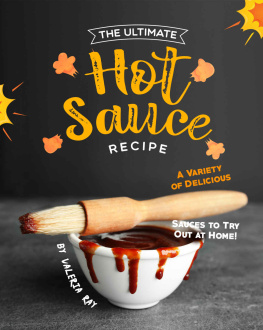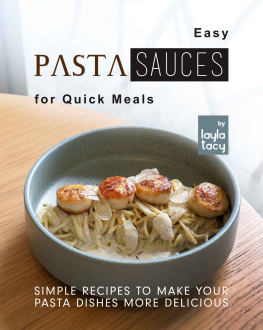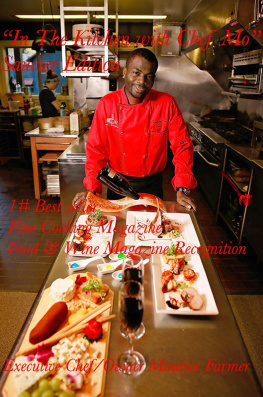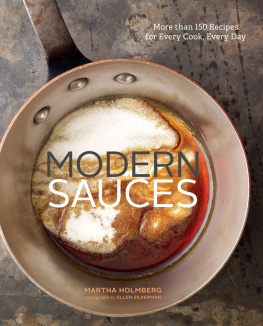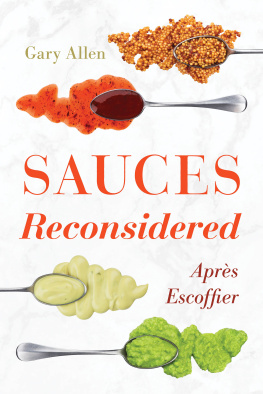SAUCES

Edible
Series Editor: Andrew F. Smith
EDIBLE is a revolutionary series of books dedicated to food and drink that explores the rich history of cuisine. Each book reveals the global history and culture of one type of food or beverage.
Already published
Apple Erika Janik Barbecue Jonathan Deutsch and Megan
J. Elias Beef Lorna Piatti-Farnell Beer Gavin D. Smith
Brandy Becky Sue Epstein Bread William Rubel Cake
Nicola Humble Caviar Nichola Fletcher Champagne Becky
Sue Epstein Cheese Andrew Dalby Chocolate Sarah Moss
and Alexander Badenoch Cocktails Joseph M. Carlin Curry
Colleen Taylor Sen Dates Nawal Nasrallah Eggs Diane
Toops Figs David C. Sutton Game Paula Young Lee Gin
Lesley Jacobs Solmonson Hamburger Andrew F. Smith
Herbs Gary Allen Hot Dog Bruce Kraig Ice Cream Laura B.
Weiss Lemon Toby Sonneman Lobster Elisabeth Townsend
Milk Hannah Velten Mushroom Cynthia D. Bertelsen
Nuts Ken Albala Offal Nina Edwards Olive Fabrizia Lanza
Oranges Clarissa Hyman Pancake Ken Albala
Pie Janet Clarkson Pineapple Kaori O Connor
Pizza Carol Helstosky Pork Katharine M. Rogers
Potato Andrew F. Smith Rice Renee Marton Rum Richard
Foss Salmon Nicolaas Mink Sandwich Bee Wilson Sauces
Maryann Tebben Soup Janet Clarkson Spices Fred Czarra Tea
Helen Saberi Whiskey Kevin R. Kosar Wine Marc Millon
Sauces
A Global History
Maryann Tebben
REAKTION BOOKS
For Noah and Ethan
Published by Reaktion Books Ltd
33 Great Sutton Street
London EC1V 0DX, UK
www.reaktionbooks.co.uk
First published 2014
Copyright Maryann Tebben 2014
All rights reserved
No part of this publication may be reproduced, stored in a retrieval system, or transmitted, in any form or by any means, electronic, mechanical, photocopying, recording or otherwise, without the prior permission of the publishers
Page references in the Photo Acknowledgements and
Index match the printed edition of this book.
Printed and bound in China by Toppan Printing Co. Ltd
A catalogue record for this book is available from the British Library
eISBN: 9781780234137
Contents

Introduction

My own sauce history follows a circuitous path, marked by blind stumbles into sauce revelations. A confirmed omnivore since childhood, I have always been pro-sauce, but I had no idea how limited my experience was until I landed in France during a year of study abroad. When I watched a French friend make vinaigrette by measuring oil, vinegar and mustard into a salad bowl before adding the greens, I realized that salad dressing for her was not the array of colourful sauces in plastic bottles that I had in mind. When I ordered crpes at a crperie, the server asked if I wanted the supplment Chantilly, but the words were meaningless to me. My blank look prompted her to fetch a sample for the table and we were delighted to find fluffy, vanilla-scented whipped cream in the cup. Since then, Ive never eaten a dessert crpe without it. In France I learned that language can be a barrier to understanding sauce, and that sauce often requires experience and context. I learned that for some sauces, a little goes a long way, even if you have purchased a kilogram container of mustard in a moment of weakness from the Grey Poupon shop in Dijon and wonder how youll ever get to the bottom.
Once my sauce curiosity was piqued, I found sauces everywhere, but they remained mysterious. Kraft Macaroni and Cheese sauce seemed foolproof until I saw someone stir the butter into the hot macaroni until it was absorbed, then add the milk and cheese powder. The sauce was grainy and dry. It dawned on me that all of the elements had to work together to make the sauce; at that moment I realized that even Kraft could teach cooks how to monter (finish) a sauce with butter. I took the trouble to make sauce for Steak Diane with shallots, wine and mustard and was astonished that it tasted exactly like A-1 Steak Sauce. A Vietnamese friend helped me understand that fish sauce can smell terrible and still taste delicious. I have never understood the appeal of hot fudge on cold ice cream, but I was captivated by a caramel-bacon dessert sauce I encountered in a restaurant. The chef had been invited to contribute a dessert to an all-bacon menu for a James Beard Foundation dinner. The exquisite result taught me that sauces are a venue for culinary creativity even though they belong to a long rule-bound tradition. This book explores all of these elements of sauce: the linguistic challenges, the French standards, the global reach of sauce, the emphasis on rules and the openness to novelty that sauce allows.

Crme Chantilly (vanilla whipped cream).
The opening chapter will examine the origin of sauce in its ancient forms: fish sauces in Asia that coexisted with Greek garum and Roman liquamen, medieval sauces redolent with spices, and elemental vinegar and mustard. These foundational sauces, used independently and as essential ingredients in a variety of prepared sauces, enhanced food in a direct and vital way. Vinegar links ancient and modern sauces. It is still used for practical reasons (vinegars acetic acid content kills bacteria and makes food safer to eat) and because its flavour has become canonical. Even with modern methods of food preservation in place, vinegar remains central to sauce because we have come to appreciate its bracing flavour. Condiment sauces in particular imitate their complex, sharp, spicy and pungent ancestors. The focus of the second chapter, condiment sauces stand between foundational sauces like soy and garum and the main-dish sauces that envelop a piece of meat or fish, merging old flavours with modern techniques. Although tomato ketchup is usually the prime suspect in arguments about the homogenization of global cuisine, condiment sauces have distinct national identities. The third chapter follows the evolution of medieval sauces through the golden age of sauce in France, defined by the use of butter and the advent of flour liaisons for thickening sauces, from seventeenth-century practitionersthrough Carme and Escoffier to the post-nouvelle cuisine era. Meat sauces of every sort are the subject of the fourth chapter, featuring British gravies and gravy for pasta as two sides of the same coin. Sauces that fit none of the previous categories or that merit special examination, such as oddly named sauces and the sauces of molecular gastronomy, are included in the fifth chapter. The final chapter attempts to reconcile national sauces with the traditions and culinary preferences of their country of origin and to consider the master sauces that cross continental divides.

|


